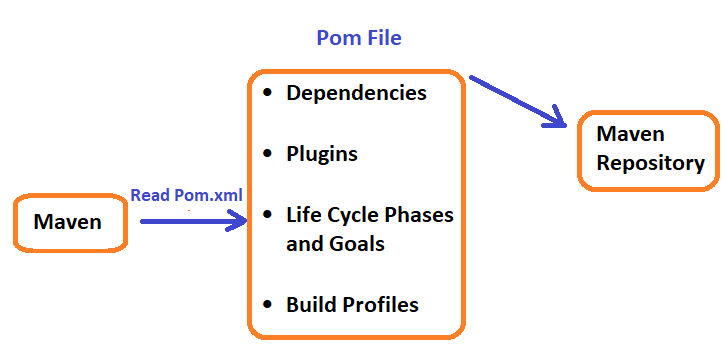Effortless Java Builds: Mastering Maven for Seamless Development
 Mohamed Abubakkar M
Mohamed Abubakkar M
What is Maven?
Maven is a powerful build automation and project management tool used primarily for Java applications. It simplifies the process of building, managing dependencies, and documenting projects by providing a standardized way to handle project configurations and dependencies.
Maven allows the developer to automate the handling of the creation of the original folder format, performing the assortment and testing and the packaging and deployment of the final output. It cuts down the considerable number of steps in the base process, and it makes it just a one-step process to do a build.
Key features of Maven include:
Dependency Management: Automatically handles project dependencies, fetching them from repositories.
Standardized Project Structure: Enforces a consistent directory layout and build process.
Build Automation: Automates common build tasks such as compiling code, running tests, and packaging applications.
Plugin Ecosystem: Extensible with a wide range of plugins for various tasks, from code quality checks to deployment.
Architecture of Maven
Understanding Maven’s architecture, based on the Project Object Model (POM), will highlight the conceptual understanding that offers a complete understanding of the build framework.
The Maven architecture is as shown below:

Its architecture displays the entire build lifecycle framework, including lifecycles, stages, goals, plugins, and other tasks right from the start.
The following steps are listed in Maven’s architecture:
First Step: Requires setting up Maven, which uses a pom.xml file. All of Maven’s configurations are present in the POM file.
Second Step: Download the pom.xml dependencies from the central repository into the local repository.
Third Step: After the user starts working in Maven, the tool offers various default settings, so there is no need to add every configuration in the pom.xml.
Essential Maven commands:
Here’s a handy list of Maven commands you’ll use frequently, along with explanations of what each command does:
Check maven version:
mvn --versionThis command displays the installed Maven version and other system information.
Create a new maven project:
mvn archetype:generate -Dfilter=org.apache.archetypes:This command allows you to choose from various Maven project templates. You’ll see a list of archetypes (templates). For a basic Java project, select archetype
9(Quick start).Follow the prompts to provide:
Group ID: This is typically your organization or project group, e.g., com.organisation_name.
Artifact ID: The unique name for your project.
Version: The version of your project. Use the latest version.
Package: Press Enter to accept the default package.
Maven will generate a project structure, including an
App.javafile in thesrcfolder.
Compile your project:
mvn compileRun this command from the directory containing the
srcfolder andpom.xmlfile. This command compiles the code and creates atargetdirectory with the compiled classes.Run tests:
mvn testExecutes the test cases in your project and generates test reports in the
targetdirectory.Clean the project:
mvn cleanThis command deletes the
targetdirectory and its contents, cleaning up previous builds.Package your project:
mvn packageCompiles the code, runs tests, and packages the project into a JAR file in the
targetdirectory.Install the jar file:
mvn installInstalls the JAR file into the local Maven repository (
~/.m2/repository). This command performs thecompile,test, andpackagephases as well.Add and manage dependencies:
Example dependency,
<dependency> <groupId>org.apache.commons</groupId> <artifactId>commons-collections4</artifactId> <version>4.5.0-M2</version> </dependency>Dependencies are external libraries required by your project. Adding them to the
pom.xmlfile ensures Maven can download and include them during the build process.Execute the main class:
mvn install exec:javaRuns the
mainmethod of the specified class. Ensure theexec-maven-pluginis configured correctly in yourpom.xml,<plugin> <groupId>org.codehaus.mojo</groupId> <artifactId>exec-maven-plugin</artifactId> <version>1.6.0</version> <configuration> <mainClass>com.Abubakkar.App</mainClass> </configuration> </plugin>Checking for programmer mistakes in the code:
mvn install checkstyle:checkstyle pmd:pmdRuns checkstyle and PMD to find code quality issues and style violations. Results are available in
target/checkstyleandtarget/pmd.
Additional tip:
Maven Goals and Phases: Maven operates through a series of phases (compile, test, package, install, etc.) and goals (specific tasks performed during these phases).
Conclusion
From setting up a new project and managing dependencies to compiling code and ensuring quality through automated checks, Maven offers a comprehensive suite of commands to streamline your development workflow. By understanding and utilizing these commands effectively, you can enhance productivity and maintain a high standard of code quality. If you have any further questions or need additional guidance on Maven, feel free to explore the Maven documentation.
Happy coding!
Subscribe to my newsletter
Read articles from Mohamed Abubakkar M directly inside your inbox. Subscribe to the newsletter, and don't miss out.
Written by

Mohamed Abubakkar M
Mohamed Abubakkar M
👋 Hello! I’m Mohamed Abubakkar I’m currently pursuing a Bachelor’s degree in Computer Science Engineering at Thiagarajar College of Engineering. My passion for technology drives me to explore a wide array of tech stacks, dive deep into data science, and tackle complex problems in data structures and algorithms (DSA). On my blog, I share insights from my academic journey, practical coding experiences, and projects that fuel my curiosity. Whether you’re interested in the latest in tech, data science tips, or strategies for mastering DSA, you’ll find a mix of tutorials, reflections, and learning resources here. I’m always open to connecting with fellow tech enthusiasts and students, so don’t hesitate to reach out! Thanks for visiting my blog. Let’s explore the world of technology together!